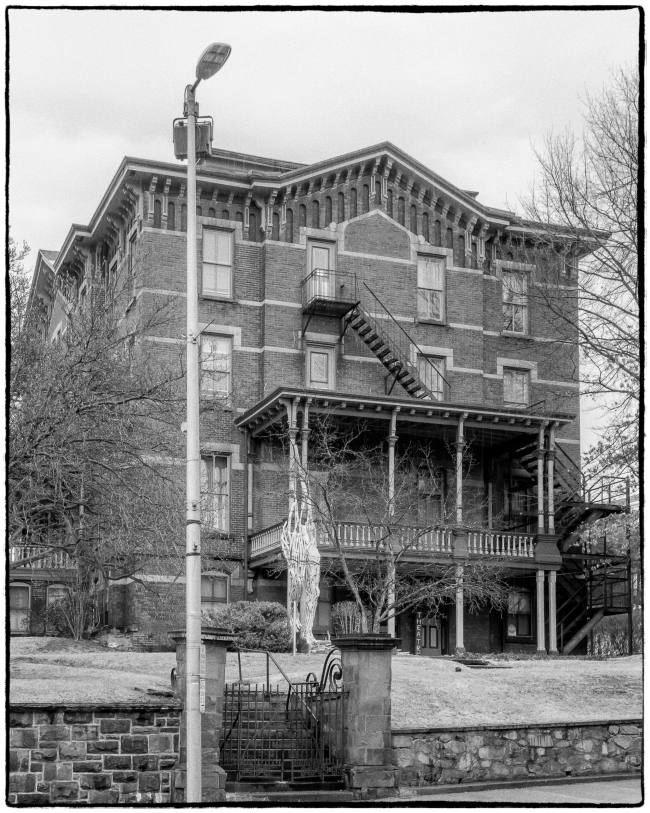This house once belonged to Matthew Vassar (April 29, 1792 – June 23, 1868. Born in the UK, Vassar was a prominent businessman and Brewer. He was also known for his philanthropy. He was the founder of the renowned Vassar College (founded 1861).
A historic marker on the property reads: “Matthew Vassar. Founder of Vassar College lived house on this site for many years. Now site of Vassar Brothers Home for Aged Men“. The sign isn’t entirely correct. As Wikipedia explains:
The Home was built by Vassar’s nephews on the site of his old house, incorporating some of the original interior trim, such as the black marble mantels. It cost $45,000 ($1,103,000 in contemporary dollars) to build and was completed in 1880. The following year it was officially opened.
Designed for 50 men, it was initially home to six who met the criteria of being at least 65 years old, Protestant and residents of New York State. It continued to operate below capacity until 1903, when the death of Matthew Vassar’s widow made enough money available.
It remained a senior citizen’s home throughout much of the 20th century. In the 1970s, it became the property of the Cunneen-Hackett Arts Center, which has used the lower floor for galleries, public and private events, and rented out the upper floors as office space for other local non-profit organizations
So it seems that although Vassar lived on this site, he never actually lived in this building. And while the house was once the Vassar Brothers Home for Aged Men – it isn’t any more. Maybe they should think about changing sign.
Vassar also lived on a large estate in Poughkeepsie (Springside) in the latter part of his life. It seems it was never finished and much of what was finished has now disappeared. However, the gatehouse has been partially restored and the original pathways and trees remain. I believe it’s open to the public now. Perhaps I’ll go for a walk there one day.
I’m fond of co-incidences and in my research around this house I discovered a couple:
Vassar’s Springside estate was designed by Andrew Jackson Downing. Part of the reason why it was not completed was because Downing died at the early age of 36 on the Henry Clay Steamboat Disaster. In the past weeks I’ve been reading about Henry Clay in the context of the Mexican American War. The Henry Clay was built by Thomas Collyer, whose mausoleum I recently visited in Dale Cemetery, Ossining.
How’s that for a bunch of co-incidences! And this post, which started out as a simple snapshot taken in the rain in Poughkeepsie while waiting for my wife to finish what she was doing has now become longer than intended. An uninspired picture (I even considered not posting it) combined with an interesting (at least to me) story. It made me think about whether I’m more interested in the pictures or the stories. Or maybe both. In this case without the picture I would never have found out about the story. So I think they both go together.

